#IBC solar panel
Text
IBC Solar Cells Market Research Report ,by type,segmentations,applications In-depth Insights by 2032
Overview: The IBC (Interdigitated Back Contact) solar cells market refers to the market for solar cells that utilize an advanced design where the electrical contacts are placed on the backside of the cell, allowing for improved efficiency and aesthetics. IBC solar cells offer advantages such as higher conversion efficiency, reduced shading losses, and improved temperature coefficients, making them attractive for various solar energy applications.
Trends:
Increasing efficiency: IBC solar cells have demonstrated higher conversion efficiencies compared to conventional solar cells. The market is witnessing a trend of continuous improvement in IBC cell efficiency through advancements in materials, cell design, and manufacturing processes. Efforts are focused on reducing recombination losses and improving light absorption to enhance overall energy output.
Growing adoption in residential and commercial installations: IBC solar cells are gaining popularity in residential and commercial solar installations. Their aesthetic appeal, high efficiency, and excellent performance in limited space make them well-suited for rooftop and building-integrated applications. The market is witnessing an increasing demand for IBC solar cells in these segments.
Technological advancements and cost reduction: Continued research and development efforts are leading to technological advancements in IBC solar cell manufacturing. These advancements include improved passivation techniques, new cell architectures, and cost-effective production methods. As a result, the cost of IBC solar cells is gradually reducing, making them more competitive in the market.
Demand: The demand for IBC solar cells is driven by the growing global demand for clean and renewable energy sources, coupled with the need for higher energy conversion efficiency. Residential and commercial consumers, as well as utility-scale projects, are increasingly adopting solar energy solutions to reduce carbon emissions and achieve energy independence. The advantages offered by IBC solar cells, such as higher efficiency and improved performance, contribute to their growing demand in the market.
Key Factors: Key factors influencing the IBC solar cells market include:
Conversion efficiency: The high conversion efficiency of IBC solar cells is a key factor driving their demand. Higher efficiency allows for increased energy production and improved return on investment for solar installations.
Technological advancements: Ongoing technological advancements in IBC cell design, manufacturing processes, and materials contribute to improved performance and cost reduction, making IBC solar cells more attractive in the market.
Market incentives and government policies: Supportive government policies, incentives, and renewable energy targets play a crucial role in driving the demand for solar energy, including IBC solar cells. Subsidies, tax credits, and net metering policies can significantly impact market growth.
Forecast Analysis: The IBC solar cells market is expected to experience steady growth in the forecast period. Factors such as increasing demand for renewable energy, advancements in cell efficiency, and favorable government policies are anticipated to drive market expansion. Additionally, ongoing research and development efforts aimed at further improving efficiency and reducing manufacturing costs will contribute to the market's growth.
Key benefits for stakeholders in the IBC Solar Cells Market:
High Efficiency: IBC solar cells offer higher conversion efficiencies compared to conventional solar cells, leading to increased energy production per unit area. Stakeholders, such as solar project developers and operators, benefit from improved electricity generation and higher returns on investment.
Enhanced Performance in Diffuse Light Conditions: IBC solar cells are known for their superior performance in low-light and diffuse light conditions. This advantage ensures more consistent energy generation even under cloudy or overcast weather, making them suitable for a wide range of geographical locations.
Reduced Light-Induced Degradation (LID): IBC solar cells are less susceptible to Light-Induced Degradation (LID), a common issue that affects conventional solar cells. This benefit ensures better long-term performance and stability, reducing the need for frequent maintenance and maximizing the lifespan of solar installations.
Space Efficiency: IBC solar cells have a back-contact design, eliminating the front-side busbars and optimizing the active cell area. This space-efficient layout enables better land utilization and allows stakeholders to generate more electricity in a limited space, making them ideal for projects with space constraints.
Positive Environmental Impact: The adoption of IBC solar cells aligns with sustainability goals, as they promote clean energy generation and contribute to reducing greenhouse gas emissions. Stakeholders, including governments and environmentally-conscious investors, can support and invest in projects that advance the transition to renewable energy sources.
Technological Advancement and Innovation: The development and deployment of IBC solar cells drive technological innovation in the solar industry. Manufacturers and researchers benefit from advancements in cell design, materials, and manufacturing processes, leading to continuous improvements in performance and cost-effectiveness.
Market Competitiveness: IBC solar cells' high efficiency and performance make them attractive options for solar project developers and EPC companies looking to offer premium solar solutions. Stakeholders can gain a competitive advantage in the market by providing state-of-the-art solar installations.
Financial Incentives and Support: Governments and utility companies often provide financial incentives and support for the adoption of high-efficiency solar technologies, including IBC solar cells. Stakeholders can leverage these incentives to enhance the economic viability of solar projects.
Diversification of Solar Energy Portfolio: IBC solar cells provide an option for diversifying solar energy portfolios, especially in utility-scale projects and large commercial installations. Stakeholders, such as utility companies and investors, benefit from having a mix of solar technologies to mitigate risks and optimize energy generation.
Grid Integration and Energy Storage Compatibility: The high efficiency and stable performance of IBC solar cells facilitate smoother grid integration and make them compatible with energy storage systems. This benefit ensures reliable and stable power supply, enhancing grid stability and resilience.
Overall, the adoption of IBC solar cells offers a range of benefits for stakeholders, including improved energy production, cost-effectiveness, environmental sustainability, and market competitiveness. Embracing this advanced solar technology can accelerate the global transition to clean and renewable energy sources.
We recommend referring our Stringent datalytics firm, industry publications, and websites that specialize in providing market reports. These sources often offer comprehensive analysis, market trends, growth forecasts, competitive landscape, and other valuable insights into this market.
By visiting our website or contacting us directly, you can explore the availability of specific reports related to this market. These reports often require a purchase or subscription, but we provide comprehensive and in-depth information that can be valuable for businesses, investors, and individuals interested in this market.
“Remember to look for recent reports to ensure you have the most current and relevant information.”
Click Here, To Get Free Sample Report: https://stringentdatalytics.com/sample-request/ibc-solar-cells-market/8929/
Market Segmentations:
Global IBC Solar Cells Market: By Company
• SunPower
• AikoSolar
• FuturaSun
• SPIC Solar
• Valoe
• Topsky Energy
• Trina Solar
Global IBC Solar Cells Market: By Type
• 120-Cell
• 132-Cell
• Other
Global IBC Solar Cells Market: By Application
• Commercial
• Residential
Global IBC Solar Cells Market: Regional Analysis
All the regional segmentation has been studied based on recent and future trends, and the market is forecasted throughout the prediction period. The countries covered in the regional analysis of the Global IBC Solar Cells market report are U.S., Canada, and Mexico in North America, Germany, France, U.K., Russia, Italy, Spain, Turkey, Netherlands, Switzerland, Belgium, and Rest of Europe in Europe, Singapore, Malaysia, Australia, Thailand, Indonesia, Philippines, China, Japan, India, South Korea, Rest of Asia-Pacific (APAC) in the Asia-Pacific (APAC), Saudi Arabia, U.A.E, South Africa, Egypt, Israel, Rest of Middle East and Africa (MEA) as a part of Middle East and Africa (MEA), and Argentina, Brazil, and Rest of South America as part of South America.
Visit Report Page for More Details: https://stringentdatalytics.com/reports/ibc-solar-cells-market/8929/
Reasons to Purchase IBC Solar Cells Market Report::
Comprehensive Insights: Market research reports provide in-depth and comprehensive insights into the ULSFO market. They typically cover various aspects such as market size, growth trends, competitive landscape, regulatory environment, technological developments, and consumer behavior. These reports offer a holistic view of the market, saving time and effort in gathering information from multiple sources.
Data and Statistics: Market research reports often include reliable and up-to-date data and statistics related to the ULSFO market. This data can help in analyzing market trends, understanding demand and supply dynamics, and making informed business decisions. Reports may include historical data, current market figures, and future projections, allowing businesses to assess market opportunities and potential risks.
Market Segmentation and Targeting: Market research reports often provide segmentation analysis, which helps identify different market segments based on factors such as vessel type, application, end-users, and geography. This information assists businesses in targeting specific customer segments and tailoring their marketing and business strategies accordingly.
Competitive Analysis: Market research reports typically include a competitive analysis section that identifies key players in the ULSFO market and evaluates their market share, strategies, and product offerings. This information helps businesses understand the competitive landscape, benchmark their performance against competitors, and identify areas for differentiation and growth.
Market Trends and Forecast: Market research reports provide insights into current market trends and future forecasts, enabling businesses to anticipate changes in the ULSFO market. This information is valuable for strategic planning, product development, investment decisions, and identifying emerging opportunities or potential threats in the market.
Decision-Making Support: Market research reports serve as a valuable tool in decision-making processes. The comprehensive insights, data, and analysis provided in the reports help businesses make informed decisions regarding market entry, expansion, product development, pricing, and marketing strategies. Reports can minimize risks and uncertainties by providing a solid foundation of market intelligence.
About US:
Stringent Datalytics offers both custom and syndicated market research reports. Custom market research reports are tailored to a specific client's needs and requirements. These reports provide unique insights into a particular industry or market segment and can help businesses make informed decisions about their strategies and operations.
Syndicated market research reports, on the other hand, are pre-existing reports that are available for purchase by multiple clients. These reports are often produced on a regular basis, such as annually or quarterly, and cover a broad range of industries and market segments. Syndicated reports provide clients with insights into industry trends, market sizes, and competitive landscapes. By offering both custom and syndicated reports, Stringent Datalytics can provide clients with a range of market research solutions that can be customized to their specific needs
Contact US:
Stringent Datalytics
Contact No - +1 346 666 6655
Email Id - [email protected]
Web - https://stringentdatalytics.com/
#Solar Cells#Solar Power Generation#Solar Industry#Solar Module#Solar Cell Efficiency#IBC Technology#Interdigitated Back Contact Solar Cells#Solar PV Systems#Solar Cell Manufacturers#IBC Solar Panel Market#IBC Solar Technology#Advanced Solar Cells#IBC Solar Modules#IBC Solar Cell Efficiency#Next-generation Solar Cells#Solar Energy Research#IBC Solar Energy Solutions.
1 note
·
View note
Text
SunPower Solar Panels - Which Sunpower Solar Panels Are Right For You?
SunPower offers an industry-leading warranty that covers both product and workmanship. It also has a monitoring system that provides energy usage data and estimates bill savings.
The company’s monocrystalline solar panels have efficiency ratings of up to 22 percent. They are black and sleek, making them attractive to homeowners. They also have better shade tolerance than polycrystalline models.
Maxeon 3
The Maxeon 3 range is one of sunpower solar panels most efficient panels available. It is manufactured using the new Gen 5 technology, with larger format IBC cells. The panel is ideal for domestic roofs that need to maximise power generation in a small space. It is also one of the most durable solar modules on the market, with an industry-leading product and performance warranty.
Sunpower’s IBC cell design converts current on the back side of the cell via a solid copper layer integrated into the rear surface. This eliminates front-exposed busbars that shade the cell, and enables higher efficiency at higher temperatures.
The Maxeon 3 is highly tolerant to shading, and has the highest power output per panel on the market. It is Cradle to Cradle bronze certified for clean ingredients and responsible manufacturing, and is backed by an industry leading 40 year product guarantee. This warranty includes repair and replacement and provides for a lower degradation rate than other comparable solar modules.
Maxeon X
SunPower’s Maxeon X series is their top-of-the-line residential solar panel technology. These panels are designed to convert more sunlight into energy than conventional panels, helping you save money on your electricity bills. These highefficiency panels feature a patented solid copper foundation that helps prevent cracks and corrosion. They also offer an industry-leading 40-year product and performance warranty, the longest in the solar industry.
Sunpower X-Series modules use 96 Maxeon Gen III cells with a power output of up to 360W. This gives these panels a conversion efficiency of up to 22.2% and is one of the highest performing residential solar panels perth on the market.
They are ideal for homeowners with a smaller roof area or who prefer to minimize the number of panels on their property for aesthetic reasons. These panels will allow you to generate your own clean energy and reduce your dependence on the grid, resulting in lower utility bills and increased property value. In addition, solar panels are a great way to reduce greenhouse gas emissions and combat climate change.
Maxeon E
The Sunpower Maxeon E is one of the most efficient residential solar panels available. Featuring bifacial cells that maximize energy production by utilising both the front and back sides of the panel. This makes it ideal for areas with partial shade and low sunlight. The Maxeon E is also Cradle to Cradle Certified and comes with an industry leading 40 year parts and labour warranty.
Designed with sleek aesthetics, the panels blend seamlessly into your roof and enhance rather than detract from your home’s design. This minimalist approach also translates into a smaller installation area, which can be a huge benefit for homeowners with limited roof space.
Featuring high efficiency and proven longevity, the panels are also designed to stand up to weather extremes. Their resistance to heat, moisture and expansion and contraction is why they are backed by an industry-leading 40-year product warranty after online registration. This is a big advantage over other manufacturers who offer only 25-year warranties.
Maxeon P
The P-Series is SunPower’s entry level solar panel offering. They’re still among the most efficient commercially available panels and boast a 25-year performance warranty. SunPower’s technology separates them from their competitors, with the back-of-the-panel supporting the copper substrate rather than using busbars on the front like conventional panels.
With 35+ years of boundary-pushing solar DNA, this world-renowned brand isn’t one to do things by halves. With this in mind, they’ve designed their Performance 3 series of shingled cells to appeal to a wider market with qualities other than industry-leading efficiency.
Their shingled cell design is more robust against environmental stresses, with a lower shade tolerance and improved energy generation in high temperatures. This translates to more power per square foot for your roof, shortening your payback time. Its superior durability also reduces maintenance costs by reducing damage and corrosion. Plus, its clean ingredients, responsible manufacturing and 40-year energy production warranties make it one of the most sustainable choices in PV.
0 notes
Text
European PV Industry Alliance: How it relates to the war in Ukraine
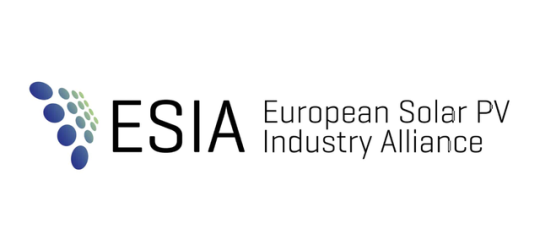
The European PV Industry Alliance aims to build sustainability and strategic autonomy for the European photovoltaic (PV) value chain. It identifies barriers, opportunities and investment opportunities in the PV value chain and addresses issues of circularity, sustainability and impact on skills.
What the Alliance is doing
To accelerate the adoption of solar in the EU, the European Solar Alliance was established in 2022 to create an industry ecosystem in the EU to ensure the reliability and diversification of solar energy supply. This will require the expansion of EU production of competitive, innovative and sustainable solar energy products and the diversification of components and raw materials in the international solar energy value chain.
The Alliance will develop and implement a strategic action plan based on the following:
Identifying bottlenecks to production expansion and providing recommendations;
Facilitating access to finance, including creating pathways for commercialization of solar manufacturing;
Providing a framework for collaboration on development and deployment;
Supporting international partnerships and sustainable global supply chains;
Supporting solar energy research and innovation;
Promote and strengthen communication on circularity and sustainability;
Identify and develop a skilled workforce for the solar manufacturing sector.

Who participates and how to join
The Alliance brings together companies and stakeholders interested in supporting European solutions to increase European solar panel and component manufacturing capacity and diversify sources of products, components and raw materials. The Alliance is open to all public and private organizations active in the solar sector, including companies and associations, social partners, education and training providers, research and technology institutes, investors, civil society organizations, and representatives of EU national, regional and public authorities.
Any organization with relevant activities in the European Economic Area may join the Alliance at any time by completing a membership application form. In doing so, they must meet the eligibility criteria set out in the Alliance's Statutes.
On December 9, 2022, the European Solar Alliance was officially launched at a high-level meeting in Brussels. Thierry Breton, EU Internal Market Commissioner, hosted the conference to formally launch the Alliance and discuss the key issues it will address.
Background
The European Green Deal and the Ready by 55 package set ambitious targets for the EU to deploy large amounts of renewable energy in the near future. Following Russia's invasion of Ukraine, the European Commission approved the REPowerEU plan on May 18, 2022, which aims to end dependence on Russian fossil fuels and aims to increase the EU's share of renewable energy to 45% by 2030. At the heart of the REPowerEU plan is the rapid deployment of renewable energy on a large scale. The EU Solar Strategy, published as part of the plan, envisions the deployment of 320 GW of solar power by 2025, more than double the 2020 target, and almost 600 GW by 2030.
To achieve these goals, the following strategy has been developed:
Proposed to extend the EU solar value chain through the European Solar Alliance.
Promoting rapid and mass deployment of PV systems through the European Solar Rooftop Initiative.
Introducing measures to simplify and speed up permitting procedures.
Ensuring access to skilled labor and job creation potential for solar energy production and deployment in the EU.
Alliance Now
The Alliance has now established four project working groups: non-price conditions, supply chain, finance and skills, led by key industry players such as Carbon, Enel Greenpower, Engie, IBC, Meyer Burger Technology AG and Wacker Chemie AG, to achieve a series of concrete actions that will form a consolidated plan for the re-industrialization of the European solar PV industry. These actions will support the EU's Green Deal industrial ambitions to develop an industry with an annual capacity of 30 GW by 2025, adding Euro 60 billion of new GDP in Europe annually and creating more than 400,000 XNUMX new jobs (direct and indirect).
EIT InnoEnergy's Head of EIT comment
Javier Sanz, EIT InnoEnergy's Thematic Head of Renewable Energy and Head of ESIA, commented, "We are delighted to see the incredibly rapid progress of the EU Solar PV Industry Alliance, with over 110 members joining across the solar value chain, from over 17 countries. It is vital that we continue to capitalize on a robust solar PV value chain and we are excited to see the results of our four project working groups to be presented later this year".
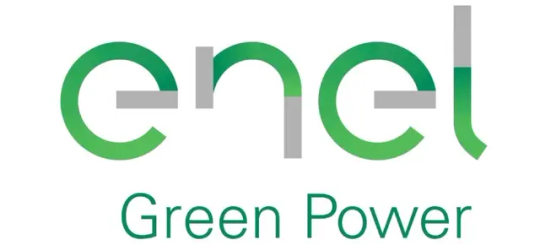
The alliance's impact on the world
Established by the European Commission and led by EIT InnoEnergy, the European Solar PV Industry Alliance promotes the innovative expansion of the sustainable industrial solar value chain in the EU, especially in the PV system manufacturing sector. The steering committee consists of the European Commission itself, EIT InnoEnergy, Solar Power Europe and the European Solar Manufacturing Council.
The Alliance supports the growth of European industry that develops and commercializes advanced technologies across the value chain, resulting in more innovative, efficient, cyclical and sustainable products and making EU climate and energy goals more achievable.
0 notes
Text
SunPower Solar Panels Review: The Complete Review
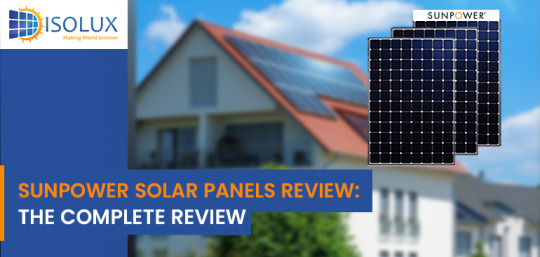
If you are a homeowner planning for solar panel installation in Sydney, this SunPower solar panels review article is for you. SunPower is a trusted brand in the solar panel market and has long topped the segment of premium solar panels. They have perfected the technique of producing solar panels, and as a result, SunPower solar panels maintain the distinction of manufacturing remarkable panels with a 22.6% efficiency rate, the highest in the home solar panel category.
This SunPower solar panels review will help you make an informed decision about why you should consider SunPower solar panels for your residential premises.
A Brief History of the Company
SunPower began its journey in 1985 and strives to be a reliable and reputable company in Australia. It is now a leading residential and commercial solar panel manufacturing company with its headquarters in San Jose, California.
The Bloomberg Tier 1 ranking indicates that SunPower is a well-known and financially stable company that has been effectively serving clients all around the world for a long time.
In 2020, SunPower split into SunPower and Maxeon Solar. The solar panels are currently manufactured by Maxeon Solar, while the SunPower branding remains.
The solar cells are mostly produced in Malaysia and the Philippines; the cells are then shipped to Maxeon facilities in France and Mexico, where they are assembled and supplied via. channels designed for the world market.
SunPower Solar Panels Review: The Differentiating Points
The following are the main reasons that distinguish SunPower solar panels as a preferred choice for solar panel installation:
IBC Solar Cell Technology
SunPower Maxeon Series solar panels feature interdigitated back contact (IBC) solar cells. IBC technology uses back-contact energy conversion as opposed to the more common front-contact conversion.
Read More: SunPower Solar Panels Review: The Complete Review
0 notes
Video
youtube
Small solar panels are used in many places. This video mainly introduces three types of small solar panels and their differences.
These solar panels are:
Type 1: Crystalline silicon solar panel (mono vs poly)
Type 2: IBC solar panel (IBC = Interdigitated back contact)
Type 3: Amorphous solar panel (A-si solar panel)
Created by Julie Huang of Blue Solaria
Blue Solaria is a leading solar panel manufacturer in China. We have been dedicated to the design, engineering, manufacturing and sales of small solar panel since 2005.
Blue Solaria Co., Ltd.
https://www.bluesolaria.com
#types of solar panel#small solar panels#custom solar panel#OEM solar panel#IBC solar panel#amorphous solar panel#solar panel#solar module#industrial solar panel#lightweight solar panel#waterproof solar panel
1 note
·
View note
Text
6V 2W Solar Panel
This 6V 2W solar panel is built with high-efficiency back-contact solar cells (IBC solar cell), delivering up to 23% efficiency. There are no grid lines on the surface of the solar panel. In addition to providing stable and consistent power output, it also has excellent low-light performance. This custom solar panel is encapsulated with PET film, which makes it lightweight and thin. This 2 watt solar panel is also waterproof, UV and scratch-resistant.
Applications:
This solar panel is widely used in wireless sensors, IoT devices, crafts, toys, LED lights, and other small electronic devices.
Item No.: FYD-BC0026
Technical Details
Solar Panel Output:
Peak Power (Pmax): 2.1 Watt
Voltage at Pmax (Vmp): 6 Volt
Current at Pmax (Imp): 350mA
Open Circuit Voltage (Voc): 7.2V
Short Circuit Current (Isc): 370mA
Power Tolerance: ±5%
Solar Panel Size: 139x94x2mm
Solar Cell Type: High Efficiency Back Contact Solar Cell
Number of Cells: 12 pcs
Construction: PET/ EVA / Solar Cell / PCB
Product Warranty: 2 Years
Storage temperature: -20°C ~ 45°C
Working temperature: -20°C ~ 65°C
Standard Test Conditions (STC): 1000W/m2, 1.5AM, 25°C Cell temperature
Custom solar design and wire soldering service are available.
Findy Solar has been a custom solar solution provider and high efficiency solar panel manufacturer in China since 2006. Types of solar panels: ETFE Solar Panel, Crystalline Solar Panel, Amorphous Solar Panel. Welcome to contact us at [email protected].
https://www.findysolar.com

#6v 2w solar panel#6 volt solar panel#2 watt solar panel#ETFE solar panel#custom solar panel#iot solar panel#ibc solar panel#Findy Solar
1 note
·
View note
Link
IBC solar panels are built with the super high efficiency IBC solar cells (“Interdigitated back contact” solar cells). They are laminated by ETFE or PET film, which is light weight and thin. Thess customized solar panels are ideal for use in off grid applications such as IoT devices, smart phones, radio, Bluetooth, wireless sensors, RF Radio Sensitivity or solar gifts etc.
#IBC solar panel#IBC solar cell#custom solar panel#ETFE solar panel#PET solar panel#WSL Solar#small solar panel#IoT solar
1 note
·
View note
Link
IBC solar panels are built with the super high efficiency IBC solar cells (“Interdigitated back contact” solar cells). They are laminated by ETFE or PET film, which is light weight and thin. Thess customized solar panels are ideal for use in off grid applications such as IoT devices, smart phones, radio, Bluetooth, wireless sensors, RF Radio Sensitivity or solar gifts etc.
#IBC solar panels#IBC solar cell#custom solar panel#ETFE solar panel#PET solar panel#small solar panel#WSL Solar#IoT Solar
1 note
·
View note
Text
SunPower Solar Panels Review
SunPower solar panels feature patented IBC cells and come with a 25-year product warranty. They also offer a free solar assessment. The process typically starts with a virtual consultation, although site visits may be necessary to check the condition of your roof and electrical panel.
SunPower had some financial issues in 2023, but is still operating as a manufacturer and installer. Its dealers should be vetted on an individual basis.
Cost
The cost of SunPower solar panels varies by region. On average, a 5-kW SunPower Equinox system costs $3 per watt, but it can be as low as $2 per watt in some areas. In addition, customers can save up to 50% on energy expenses when utilizing available tax credits and rebates.
The cost of a SunPower solar system depends on the size of your home and how much energy you use. The easiest way to determine the number of panels you need is by calculating your hourly usage using your electricity bill and multiplying it by peak sunlight hours. You can also consider adding a dual-axis tracker, which follows the sun throughout the day and maximizes your solar energy production. However, this option can increase your upfront installation cost. SunPower also offers a free online calculator and design studio that allows you to see what your solar energy system will look like on your roof.
Efficiency
Solar energy is a clean and renewable source of electricity. It can power appliances, heat or cool homes and even charge video games. SunPower solar panels are the most efficient in the industry, generating more power from less sun exposure. They also feature an anti-reflective coating and sleek aesthetics homeowners desire.
The company offers a free virtual consultation to review your home’s solar potential and provide a system design. It will then secure city permits, building approvals and enroll you in available net metering programs. Once you have your permits, the company will install your system within one day. Once the installation is complete, your city will conduct a final inspection and give you permission to turn on your solar energy system.
Life expectancy
The lifespan of solar panels depends on the type you choose and your location. Monocrystalline and polycrystalline solar panels tend to last longer than thin film models. They also have lower degradation rates and are less susceptible to microfractures. In addition, they are able to withstand temperature changes without losing power output.
SunPower’s premium solar panels are among the highest-performing models in the industry, with an efficiency rating of up to 22.8% and a power temperature coefficient of -0.27% per degree C. They also offer some of the strongest warranties, including a 40-year product and performance warranty for some models.
These high-efficiency panels are engineered by American engineers and feature a unique shingled design that helps them resist shading. They also have a patented foundation that helps them recuperate energy that would otherwise be lost to heat. As a result, they can deliver a high yield over a long period of time. The company’s newest model, the Maxeon 7 series, boasts an impressive low degradation rate of 0.25% per year and is guaranteed to retain 90% of its original power output after 40 years of use.
Warranty
SunPower offers one of the best warranties in the industry. Their Complete Confidence warranty includes 25 years of product and performance protection. It also comes with a 10-year warranty for their battery storage system and monitoring software. In addition, they offer an industry-leading 40-year power output warranty.
The company’s warranty is backed by Maxeon IBC cells that are designed with a durable foundation and can withstand high thermal stresses. They also dissipate heat better, reducing the risk of hot spots and micro-cracks that are common with standard solar panels.
The company’s Equinox home solar solution include panels, inverters, and batteries that integrate with their SunVault storage system to save energy for later use. This comprehensive, end-to-end package is backed by an excellent warranty that’s available regardless of which payment method you choose with SunPower. This makes them a great choice for homeowners who want to fight high utility prices.
0 notes
Text
Asce 716

In June 2017, the American Society of Civil Engineers (ASCE) published an updated edition of ASCE 7, 'Minimum Design Loads and Associated Criteria for Buildings and Other Structures,' (ASCE 7-16). Because ASCE 7-16 is referenced in the International Building Code,® 2018 Edition (IBC 2018) as the basis for design wind-uplift load determination for all roof assembly types except asphalt shingles and tile, you should be aware of the changes.
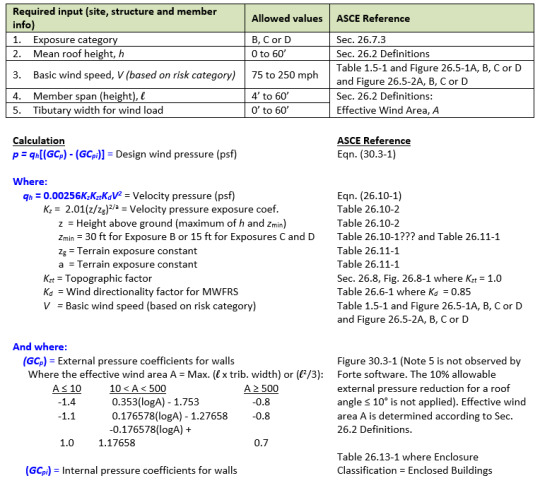
ASCE 7-16: Changes to Wind Calculations for Rooftop Solar Joe Cain, P.E. Chair, SEIA Codes & Standards Working Group David Banks, PhD, P.Eng Principal Cermak Peterka Petersen (CPP). . 2016 edition of ASCE 7, “Minimum Design Loads and Associated Criteria for Buildings and Other Structures” (ASCE 7-16). Buildings with roof slopes less than 7 degrees (approximately 1½:12 roof slope). Building heights less than 60 ft. Mechanically attached and Drill-TecTM RhinoBond® roofing systems. About ASCE 7 16 Pdf Free Download he pressure coefficients for the Main Wind Force Resisting System (MWFRS) in Chapter 27 of ASCE 7-16 for buildings above 60ft date from the mid-1970s, primarily from the work of Akins et al. And ASCE 7-16 Figure 11.4-1. Both of these procedures are described in ASCE 7-16 Chapter 21. The first procedure is a site response analysis (SRA; see Section 21.1). This analysis has been generally required for Site Class F soils for several ASCE 7 code cycles. This procedure uses a detailed soil model developed from site-specific data.
ASCE 7-16
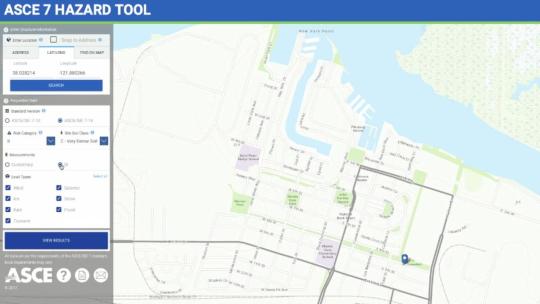
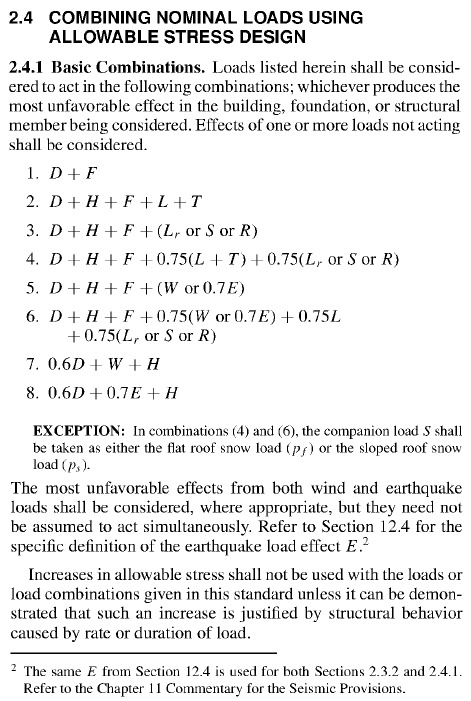
ASCE 7-16's design wind-uplift load procedures are described and the basic design wind speed maps are provided in Chapter 26-Wind Loads: General Requirements. Design wind-uplift loads for roof assemblies typically are determined using ASCE 7-16's Chapter 30-Wind Loads: Components and Cladding.
Chapter 30 provides seven methods—referred to as 'Parts'—for wind load determination. Part 1 applies to low-rise, enclosed or partially enclosed buildings. Part 2 is a simplified approach applicable to low-rise, enclosed buildings. Part 3 applies to enclosed or partially enclosed buildings higher than 60 feet. Part 4 is a simplified approach applicable to enclosed buildings higher than 60 feet but less than 160 feet in height. Part 5 applies to open buildings of all heights. Part 6 applies to building appurtenances, such as roof overhangs, parapets and rooftop equipment. And Part 7 applies to nonbuilding structures, including rooftop solar panels.

Part 2 and Part 4 apply to most buildings and likely will be used by most roof system designers. These simplified approaches include tables in Chapter 26 and Chapter 30 instead of analytical calculations.
Significant changes
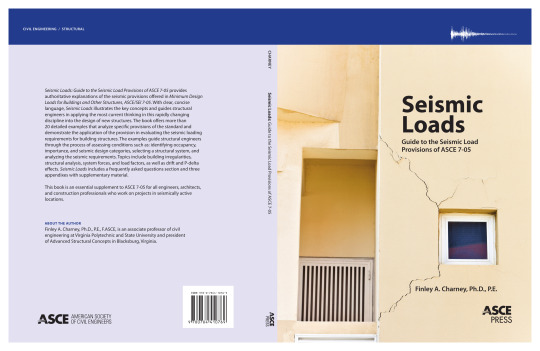
Comparing ASCE 7-16's wind-uplift design procedures with those of the previous version, ASCE 7-10, reveals several notable changes.
ASCE 7-16's basic design wind speed maps differ from ASCE 7-10's maps. Although the wind speeds along the U.S. Atlantic and Gulf of Mexico hurricane coastline are similar, ASCE 7-16's wind speeds in the central U.S. are slightly lower and in the West are notably lower than ASCE 7-10's wind speeds. Also, ASCE 7-16's maps include midpoint indicators between the maps' wind speed contours. Interpolation between the wind speed contours is permitted.
ASCE 7-16's external pressure coefficients are generally higher than those of ASCE 7-10. ASCE 7-16's Zones 1, 2 and 3 external pressure coefficients have increased about 70 percent, 28 percent and 14 percent, respectively, from ASCE 7-10. These external pressure coefficient increases generally will result in higher design wind-uplift loads in ASCE 7-16's Zones 1, 2 and 3 than ASCE 7-10's zones. ASCE 7-16 also includes a new Zone 1' pressure coefficient that is about a 10 percent reduction from ASCE 7-10's Zone 1.
ASCE 7-16's zone diagrams, which define the rooftop configurations to which the external pressure coefficients apply, generally differ from and are somewhat more complex than those in ASCE 7-10 and other previous editions. For example, for flat, hip and gable roofs with slopes less than 7 degrees (about 1.5-in-12 slope), ASCE 7-16 has a zone diagram that applies to buildings 60 feet and less in height and another diagram that applies to buildings taller than 60 feet. ASCE 7-16's zone diagram for buildings 60 feet and less has a Zone 1' in the center of the roof area's field and is surrounded by Zone 1. Zone 2 is at the roof area's perimeter and generally is wider than ASCE 7-10's Zone 2. ASCE 7-16's Zone 3 is an L-shaped corner that occurs inside the width of Zone 2 and is somewhat smaller than that in ASCE 7-10.
For buildings with flat roof assemblies greater than 60 feet in height, ASCE 7-16's zone diagram is similar to ASCE 7-10; however, the external pressure coefficients are greater.
The changes in the configurations of the zone diagrams and the magnitude of the associated external pressure coefficients are important considerations because these define the regions and extent where additional perimeter and corner attachment enhancement generally are necessary.
Closing thoughts
The changes incorporated into ASCE 7-16 will result in increased design wind-uplift loads and more complex perimeter and corner zones for most roof system designs. It remains to be seen how implementation of ASCE 7-16 will affect specific roof system designs. In many instances, additional perimeter and corner attachment may be necessary to satisfy ASCE 7-16's higher loads.
I encourage roof system manufacturers and designers to provide applicators with specific and straightforward guidance for any enhancements that are necessary where ASCE 7-16 applies.
NRCA has updated its Roof Wind Designer online application (www.roofwinddesigner.com) to include design wind-uplift load calculations based on ASCE 7-16's simplified approaches in Parts 2 and 4. Negative reinforcement in the classroom.
Asce 7-16 Section 11.4.8
Among the sleep free download mac. ASCE 7-16 can be purchased by accessing the publications tab of ASCE's website, www.asce.org.
Mark S. Graham is NRCA's vice president of technical services.
@MarkGrahamNRCA
For an article related to this topic, see 'How do I load thee?' October 2017 issue.
This column is part of Research + Tech. Click here to read additional stories from this section.
Asce 7-16 Download
COMMENTS
Be the first to comment. Please log in to leave a comment.
More specifically, it changes the uplift (or negative pressures –referred to as 'pressures' in this article) that roof coverings are required to resist. ASCE, the American Society of Civil Engineers, creates the structural standards that are referenced in the major building codes. ASCE 7 is called the Minimum Design Loads and Associated Criteria for Buildings and Other Structures. That’s a mouthful. The 7-16 is due to the year it was promulgated. A slightly modified version of ASCE 7-16 is the most recently adopted version in the Florida Building Code (FBC) 7th Edition (2020) that goes into effect December 31, 2020. All roof coverings except asphalt shingles and metal shingles will be impacted. Asphalt shingles use the FBC’s Classification of Asphalt shingles Table 1507.2.7.1 (R905.2.6.1). Metal shingles use the FBC’s Classification of Metal Roof Shingles Tested in Accordance with ASTM D3161 Table 1504.3.3 (R905.4.4.1). These tables use wind speed in miles per hour (mph) instead of pressure. All other roof coverings and roof systems must meet the FBC’s requirements for components and claddings in ASCE 7-16. ASCE 7-16 didn’t change the wind speeds, however it did change the coefficients used in the calculations that generally increases the pressures. The information included here should allow you to determine the proper pressures on most jobs without doing the actual calculations. Read More.

0 notes
Text
[read ebook] International Building Code Ebook
[read ebook] International Building Code Ebook
International Building Code

[PDF] Download International Building Code Ebook | READ ONLINE
Author : International Code Council (ICC)
Publisher : International Code Council
ISBN : 1609834682
Publication Date : 2014-6-5
Language :
Pages : 690
To Download or Read this book, click link below:
http://read.ebookcollection.space/?book=1609834682
$^DOWNLOAD#$
Synopsis : [read ebook] International Building Code Ebook
Featuring the very latest industry standards in material design, the 2015 INTERNATIONAL BUILDING CODE SOFT COVER version offers up-to-date, comprehensive insight into the regulations surrounding the design and installation of building systems. It provides valuable structural, fire-, and life- safety provisions that cover means of egress, interior finish requirements, roofs, seismic engineering, innovative construction technology, and occupancy classifications for all types of buildings except those which are detached one and two family homes and townhouses not more than 3 stories high. New code sections have been added to the 2015 IBC that cover rooftop mounted photovoltaic solar panels and all the content in the book is developed in the context of the broad-based principles that facilitate the use of new materials and building designs. The updates to this code make it an essential reference guide for anyone seeking a strong working knowledge of building systems.
0 notes
Photo


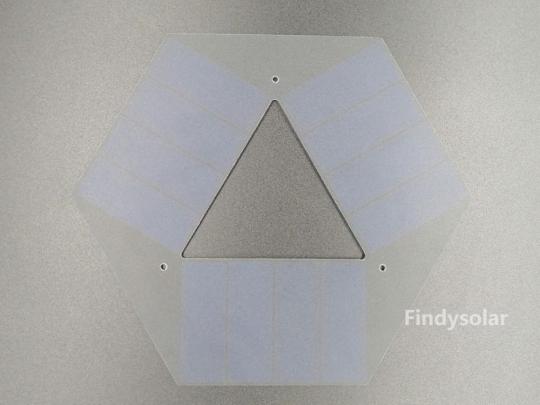
ETFE solar panels with IBC solar cells produce more energy for the same sized solar panel than traditional one.
The structure of ETFE solar panel is ETFE film / EVA / IBC solar cells / EVA / PCB.
ETFE solar panels are produced through STM automatic placement technology, so they can be more flexibly customized into various small-sized solar panel designs. ETFE solar panels are widely used in wireless sensors, IoT devices, crafts, toys, LED lights and other small electronic devices.
Findy Solar has been a custom solar solution provider and high efficiency solar panels manufacturer in China since 2006. From the customer's initial product development stage, we provide optimized solutions and technical support for custom solar panels. We can produce high-efficiency, custom solar panels of different sizes, shapes, materials and powers according to the specific requirements of our clients to suit their needs.
https://www.findysolar.com
#custom solar panels#ETFE solar panels#high efficiency solar panel#small solar panel#mini solar panel#Findy Solar
1 note
·
View note
Text
[PDF mobi ePub] International Building Code [EBOOK]
[PDF, mobi, ePub] International Building Code [EBOOK]
International Building Code
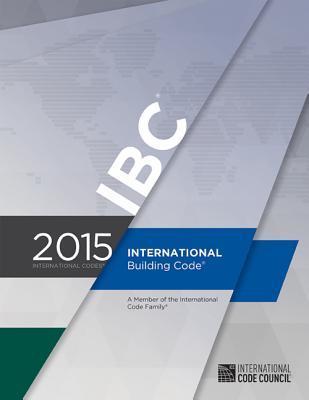
[PDF] Download International Building Code Ebook | READ ONLINE
Author : International Code Council (ICC)
Publisher : International Code Council
ISBN : 1609834682
Publication Date : 2014-6-5
Language :
Pages : 690
To Download or Read this book, click link below:
http://read.ebookcollection.space/?book=1609834682
Synopsis : [PDF, mobi, ePub] International Building Code [EBOOK]
Featuring the very latest industry standards in material design, the 2015 INTERNATIONAL BUILDING CODE SOFT COVER version offers up-to-date, comprehensive insight into the regulations surrounding the design and installation of building systems. It provides valuable structural, fire-, and life- safety provisions that cover means of egress, interior finish requirements, roofs, seismic engineering, innovative construction technology, and occupancy classifications for all types of buildings except those which are detached one and two family homes and townhouses not more than 3 stories high. New code sections have been added to the 2015 IBC that cover rooftop mounted photovoltaic solar panels and all the content in the book is developed in the context of the broad-based principles that facilitate the use of new materials and building designs. The updates to this code make it an essential reference guide for anyone seeking a strong working knowledge of building systems.
0 notes
Text
Life Cycle Analyses of PV Solar Systems: Nowadays, Forecast, Process and Replacements

Abstract
Taking advantage of the technology’s fiercely improved competitiveness in Solar Power, Portugal is investing solid in this type of technology. Solar energy has been presented as a key solution for satisfying the energy demand with environmental and social benefits. Being true on energy production (electricity and thermal), on the remaining life cycle one can find evidences far from it. The electric components of a PV panel are still based on rare elements, such as Silicium. The manufacturing the Solar panels requires cooper, iron, steel and other metals. The electricity by PV production obliges the use of storage devices, mainly batteries, that uses elements dangerous for the environment, such as acids. Also, modern batteries are based on rare elements, such as lithium. The exploration of raw materials, such as silicium and lithium, is very controversial because of the local social impacts on agriculture, forestry, and landscape of rural areas, for example.
The present paper presents the different principal technologies on market (monocrystalline, polycrystalline and thin film), the necessary devices (load regulator, protections, e.g.), the common devices (such as storage devices and backup systems), and focus on their materials impact, based on a life-cycle analyses. The present paper also presents the process of full recycling a PV solar system. It is possible to realize that, despite the high energy impact and environmental impact in mining and manufacturing, the PV solar systems fully compensate in the short run. Thereby, there is not only the economic advantage.
Keywords: Life cycle analyses; Environmental impact; Recycling; Waste management; Solar PV panels; DC cables; Inverter
Introduction
Around the world, 2018 brought the PV industry many ups and downs, policy shift, tariffs, cancellations and lack of clarity about the future of solar PV with or without storage. The industry’s extreme uncertainty had impacted every section of the PV supply chain. Global solar PV installations will reach a new high of 114.5GW by the end of 2019, up 17.5% on 2018. The market is now back on a strong growth trajectory after a slowdown in 2018. Annual installations are expected to rise to around 125GW per year by the early 2020s (Figure 1).
Technological innovations will reduce the cost of electricity (LCOE) by source in the next decade. Since 2010, prices for photovoltaic solar panels have dropped by approximately 90%, an incredible reduction that makes this technology attractive. Figure 2 [1] shows the evolution of the prices of photovoltaic solar panels. It was in 2010 that solar energy grew at a giant pace. In the last decade alone, solar installations worldwide have grown more than 6 times, from 16GW in 2010 to 105GW in 2019 (annual values). Meanwhile, prices for silicon solar panels have dropped from just over €2 / W to just over €0.20 / W in the third quarter of 2019! A price reduction of around 90% has become one of the most important factors driving the worldwide expansion of solar energy. No other electricity generation technology has been able to keep up with this pace of reducing solar energy costs during this period.
Decade of 2010 witnessed the following improvements in solar panels: More efficient monocrystalline silicon panels began to replace polycrystalline silicon panels, becoming the predominant panels. Solar panels began to use advanced cell architectures, such as the passive emitter and posterior contact (PERC) and interdigital posterior contact (IBC), the straight union with an intrinsic thin layer and double-sided cell technologies. Panels based on larger cells (158mm and above) and N-type cells begin to dominate the market. Innovative panel techniques, such as medium-cut panels and solar tiles, are starting to have their market share.
China and the United States, as leaders in the solar sector, will need to build recycling plants or find an alternative way to deal with this waste. Figure 3 [3] shows the cumulative waste volumes of the leading countries in solar installations and the volume of end-of-life waste by 2050. [2] analysis has detected a variety of developments and some thoughts on the top 10 trends to watch this year:
a) The market will (finally) crack 100 GW for the first time b) More sub-$30/MWh bids—and maybe even another record low
c) Revised policy targets will determine the market’s longterm growth
d) Another entrant to the subsidy-free club in Europe.
e) Big business goes big on corporate solar procurement in the U.S.
f) More projects trading hands, particularly in the U.S.
g) Large-scale solar-plus-storage comes into the spotlight but remains a niche solution in emerging markets.
h) Mono PERC and bifacial modules keep CapEx costs marching down.
i) A make-or-break year for mega-project plans.
j) Oil and gas majors embrace solar in upstream and power.
The point 4 (Another entrant to the subsidy-free club in Europe) refers to Spain, Portugal, and Italy have been at the vanguard of subsidy-free utility-scale solar PV, with multiple gigawatts in the development pipeline. This year will see the first wave of those projects delivered. As costs continue to come down, 2019 is also set to be the year that the trend spreads beyond Southern Europe. In the UK, there has been no support scheme available for large-scale solar PV since the Renewables Obligation closed in the first quarter of 2017. Nevertheless, there are projects of 2.3GW that either already have or are awaiting planning permission in the development pipeline that could be delivered without subsidy. This is of special importance for Portugal in the short run subject to energy production in terms of energy and in the long run for waste management in terms of recycling. The renewable energy new investments are shown in Figure 4. [4] It is possible to observe that solar energy has the major new investments, followed by close by small hydro.
Figure 5 [5] shows the past investments by Country groups. It is possible to observe that the total investment in solar power was down almost a quarter in 2017, partly due to changes in Chinese solar policy, which restricted new projects’ access to the feed-in tariff.
Solar Technologies
Energy Trend believes that the PV industry has faced several critical challenges as well as reshufflings in 2018. In the face of these developments, the industry is expected to become healthier and more stable in the long run. As the supply chain’s prices continue to decline, the PV industry is expected to approach grid parity with fewer subsidies. The popularity of non-subsidized systems and the actual uniform power cost (LCOE) will become the price indicators for supply chains in the future. Further price decline expected and sales increase.
Although the whole PV supply chain suffered from low margin and oversupply in 2018, the Rank companies still reported strong operating results driven by their advanced technologies, competitive cost structure and wide global distributions. Most of their capacity expansion plans can still be put into practice. Because of that, the upstream sectors have continuously become more concentrated and Mono-Si wafers to be the mainstream supply. With mono-Si wafers becoming mainstream and taking up to 60% of the annual wafer supply in 2019, their supply chain will play a more dominant role in the market. It will also reverse the situation that multi-Si products are more competitive than mono-Si ones in recent years, and multi-Si manufacturers with less market competitiveness will gradually be eliminated in the future. For decades thin film modules have struggled to grow or even maintain market share, however, new approaches to largearea module production and other advances show that thin film is gaining ground on its inherently superior cost and performance profiles.
Thin solar panels use solar cells produced from Cadmium Telluride, a compound that makes them flexible, light and environmentally friendly. As they have a flexible feature, and because they are thin, they have several applications. In terms of value, they are cheaper than poly or mono solar modules, but with an efficiency of only 16%. Ideal for outdoor activities as they allow you to charge mobile phones or tablets. Polycrystalline solar panels use polycrystalline silicon solar cells, which are cheaper than monocrystalline silicon cells. They have a better efficiency when compared to thin solar panels, about 17%, but being a fixed solar module, it cannot walk from one side to the other. Monocrystalline solar panels are produced from high purity silicone, which is cut into pieces and then used to create a highly efficient solar module. Panasonic currently offers solar panels with an efficiency of 19.7%, with solar cells of 21.7% efficiency. Double-sided solar panels can provide a bonus between 5% to 15% of the output power with only a price premium of 2% to 3%. Because fewer solar panels will be used to produce the same amount of electricity, double-sided panels can reduce system balance (BoS) costs by 3% to 7%. [7-10].
How fast do solar panels degrade/lose their efficiency?
Solar panel manufacturers put a lot of effort into making their solar panels robust. They need to be able to withstand heat/cold cycles and heavy weather. However, solar panels are not flawless, and they will inevitably age. The rated power output of solar panels typically degrades at about 0.5%/year. However, thin-film solar panels (a-Si, CdTe and CIGS) degrades faster than panels that are based on mono- and polycrystalline solar panels. Table 1 [11] shows the output loss in percentage per year, where Pre and Post refer to installations prior to and post 2000.
Solar panels typically degrade faster in the first couple of years of their life. It is difficult to precise the life expectancy of solar panels and the real Lifecycle of Solar Panels. However, one can find interesting to associate it to the warranties given by the manufacturers. Figure 6 [12] shows different solar panel warranties on the market nowadays for different manufacturers based on the guarantee that the performance of their solar panels will stay above the presented ranges. Most manufacturers offer the 25-year standard solar panel warranty, which means that power output should not be less than 80% of rated power after 25 years. So, the question that raises is what will happen to solar panels after those 25 years? The truth is one doesn`t really know since there is not really a lot of data to look at since photovoltaics is a relatively new technology (most of all solar panels are less than 10 years old). What can one do to extend the life of my solar panels?
a) Avoid physical damage (e.g. trees and bushes blowing in the wind and creating scratches). The more surface scratches, the more performance degradation. In the worst-case, water can seep through the surface, which can short-circuit the solar panels.
b) Regular maintenance and cleaning are important.
c) The more weather and wind the solar panels are exposed to, the faster they will degrade (e.g. think about shelter from the wind when evaluating placement).
With the rapid growth of solar energy in recent years, some concerns are raised, such as the analysis of the life cycle of photovoltaic panels and their useful life.
a) After reaching their time limit, can they be recycled or reused?
b) How much energy does a photovoltaic system need in its production?
c) And how much CO2 is released into the environment for its production? [13]
LCA- life cycle assessment
A life cycle assessment (LCA - also called a ‘life cycle analysis’) examines every aspect of a product’s life from the gathering of raw materials right up to its disposal and eventual breakdown. Life cycle analysis is a technique for measuring the environmental impacts associated with a product’s life stages from raw material extraction, production, distribution, use, final disposal, and recycling. This involves the amount of material and energy required by all these steps in addition to the emission of pollutants and waste during use. Even environmentally ‘friendly’ technologies like solar panels have some impact on the environment, and it is well worth considering how much energy goes into their manufacture. A proper LCA will by necessity be as specific as possible to measure the total influence of the product, especially considering things like how and where materials and components are produced, and what sorts of emissions are associated with transport.
First the quartzite is mined and refined into silicon, then further processed to make a silicon cell. Components are then assembled and shipped in bulk around the world to individual retailers. From there, the products are purchased and installed in people’s homes where they will begin to pay back the energy used in their production. At the end of their lives - normally somewhere between 25 and 30 years, some components may be recycled, reversing any energy used in the initial gathering and others will need to be scrapped. In addition to the cell itself, glass for the covering, aluminium for the framing and copper for the wiring as well as various rubbers and plastics all go into making the completed kit. Nearly all the energy ‘consumed’ across a solar panel setup’s life cycle (close to 85%) comes from turning the quartzite rock into a silicon wafer. More specifically, about half of this energy is consumed turning the silicon from metallurgic grade silicon (MG-Si) into a refined solar-grade silicon (SoG-Si) required in solar cells.
As well as the solar panels themselves, a complete assessment also needs to consider other supporting hardware like DC to AC inverters. The amount of energy used in the production of a 1kW solar PV system creates nearly two tonnes of greenhouse gases. The next largest contributor to energy use is the production of the inverter, but at only around 7% of the total, it pales in comparison to the production of the solar panels. Batteries and inverters typically must be replaced every 5 to 10 years. Solar panels are relatively quick to generate enough energy to offset the amount used in their own production, so they are quite efficient.
The European Union was the first world body to adopt specific laws for future solar panel waste. The European directive included specific objectives for the collection and recycling of solar panels and obliges all producers to finance the costs of this collection. This Directive introduced the legal obligation to recycle photovoltaic panels, across Europe. In Portugal, the transposition of the directive into the national legislative framework attributed this responsibility to producers of this type of equipment, as of 8 May 2014 (Decree-Law No. 67/2014, of 7 May). [14-22].
Recycling process
The International Renewable Energy Agency (IRENA) carried out a study and published in 2015, a report that says that the volumes of photovoltaic panel waste in 2050 could be worth millions of euros in the world market for basic products, whenever appropriate recycling is done and the materials are reused. For example, the project CABRISS of Horizonte 2020 [23] that was launched in July 2015 showed that it is possible to use three main techniques to extract reusable materials of high value and efficiency from recycled panels:
a) A process to remove the blade and to recover recyclable materials such as silver, silicon and high purity glass with thin photovoltaic film at the end of its useful life and photovoltaic module
b) A technique for the recovery of solid waste from solar manufacturing
c) It is a kerf process for drying photovoltaic silicon waste from material lost during the cutting process.
To identify the component characterization some steps are made. The first part to remove from the different types of components present in the modules is the frame, which is easily removed manually. All the material can be fully recycle. The glass layer present in the modules is thus easily accessible to be removed manually and is then comminated in an aluminum mortar. After comminution, the powder is sieved through a sieve and sent for X-ray fluorescence analysis.
The photovoltaic cells present in the modules are coated with different polymeric materials, so a process using solvents is required to remove the material. Preliminary tests are carried out with several types of solvents (Hydrofluoric Acid, Sulfuric Acid, Alcohol, Acetone and a solution mentioned in the literature containing 300ml of HF 40% PA, 30 ml of HNO365% PA, 90 ml of H2O DI and 3g of NH4F (65 )). There are two procedures that best detach the cell from the module:
a) Pieces of about 1cm² are dipped in HF 40% P.A. and left for 48 hours. The glass of these pieces is previously removed manually. This immersion resulted in the precipitation of small amounts of a black coloured powder. This procedure is repeated until approximately 10g of material is obtained. Then, the solution was filtered by gravity on 45μm filter paper. The filtered material was washed with distilled water, dried in an oven at 100oC and ground in an aluminum mortar, for further analysis by X-ray diffraction and fluorescence.
b) For encapsulating material of the module with greater surface area (rough), pieces with about 2 cm² were dipped in PA sulfuric acid and left for 48 hours, subjected to constant magnetic stirring to facilitate the removal of silicon. There is no prior separation of the module glass. Once the desired material has precipitated, the solution is filtered by gravity on 45 μm filter paper. The filtered material is washed with distilled water, dried in an oven at 100oC and ground in an aluminum mortar, for further analysis by X-ray diffraction and fluorescence. The final material consists of a fine black powder. The material is sieved, so that the particles had a size less than or equal to 0.044mm. This material was analyzed by X-ray diffraction and X-ray fluorescence. X-ray diffraction analysis can be performed on a diffractometer employing Cu-Kα radiation, θ-θ goniometer (theta-theta) and graphite monochromator at the detector entrance.
In order to better analyze the constitution of the photovoltaic cell, a sample of module A is taken to the optical microscope. To do this, the front glass layer and the adhesive layer of a 2cm² sample from the module are manually removed. The metallic filaments present in the modules are the following elements: Copper, lead and tin. The Silver Concentration / Extraction processes start with the segregation of the materials present in order to allow the proposition of a recycling route. Grinding, granulometric separation, leaching, precipitation and thermal process (pyrolysis) procedures are used. Initially, grinding is carried out together in knife mills in order to make a comminution of all parts without any prior separation (except for the external aluminum frames). The modules pass through a knife mill several times with different opening grids. After the grinding step, a granulometric separation is made using a sieve on a sieve shaker, obtaining three different fractions: smaller (<0.5mm), intermediate (0.5mm 1 , 0mm), then being digested in a 3: 1 solution of aqua regia (3 parts of 38% hydrochloric acid to 1 part of 64% nitric acid), with stirring. There is a risk of precipitation of silver chloride but using aqua regia is a common solution in works for the characterization of metals in waste electrical and electronic equipment. In order to concentrate the silver identified in the photovoltaic cell, leaching with nitric acid is carried out. Digestion takes place at room temperature for two hours, under magnetic stirring. The solution is filtered, the precipitate is reserved. The filtered solution was analyzed via atomic absorption spectrometry (AA) to quantify the silver in solution. The amount of sodium chloride (NaCl) to be added can be determined empirically by making the addition in two steps and observing precipitation. If precipitation does not occur in the second step, it appears that all ionic silver reacted with the chloride. Thus, 1.5g of NaCl is added to the filtered solution to precipitate silver in the form of Silver Chloride (AgCl).
The main difficulty encountered in separating the components is due to the polymeric adhesive material that joins the glass layer and the semiconductor layer (cell). Even when the glass layer is removed manually, the polymeric adhesive remains attached to the semiconductor layer. Therefore, the idea of using a previous pyrolysis aims at removing this adhesive layer beforehand to facilitate a later concentration of silver. [24-29].
Conclusion
Technological innovations, lower prices, widespread market opportunities and small-scale investments lead to a massive introduction of PV solar systems and forecasted to grow exponentially. This amazing primary energy is not neutral, and the life cycle is required to be considered.
a) It is possible to conclude that solar PV full cycle proves that the environmental impact and cost of these technologies is low. Also, the recycling process is quite simple and low-cost. Although the solar PV systems are not neutral, the environmental impact allied with the energy and economic benefits are a boost for this primary energy on the mix.
To Know More About Insights in Mining Science & Technology Please click on:
https://juniperpublishers.com/imst/index.php
For more Open Access Journals in Juniper Publishers please click on:
https://juniperpublishers.com/index.php
For more about Juniper Publishers Please click on:
https://www.zoominfo.com/c/juniper-publishers-inc/370428819
#Juniper publishers#Open access Journals#Peer review journal#Juniper publisher reviews#juniper publisher journals
0 notes
Text
El autoconsumo en España se podrá beneficiar de los nuevos paneles solares Futura Zebra IBC
El autoconsumo en España se podrá beneficiar de los nuevos paneles solares Futura Zebra IBC
/COMUNICAE/
El fabricante líder Europeo de paneles solares con tecnología IBC, FuturaSun, acaba de anunciar que comenzará a distribuir sus módulos fotovoltaicos en el mercado Español de autoconsumo a partir del 1 de Julio
El fabricante de módulos fotovoltaicos, FuturaSun, con sede en Padua (Italia) y fundada en el 2008, acaba de hacer público que comenzará a distribuir sus paneles solares…

View On WordPress
0 notes